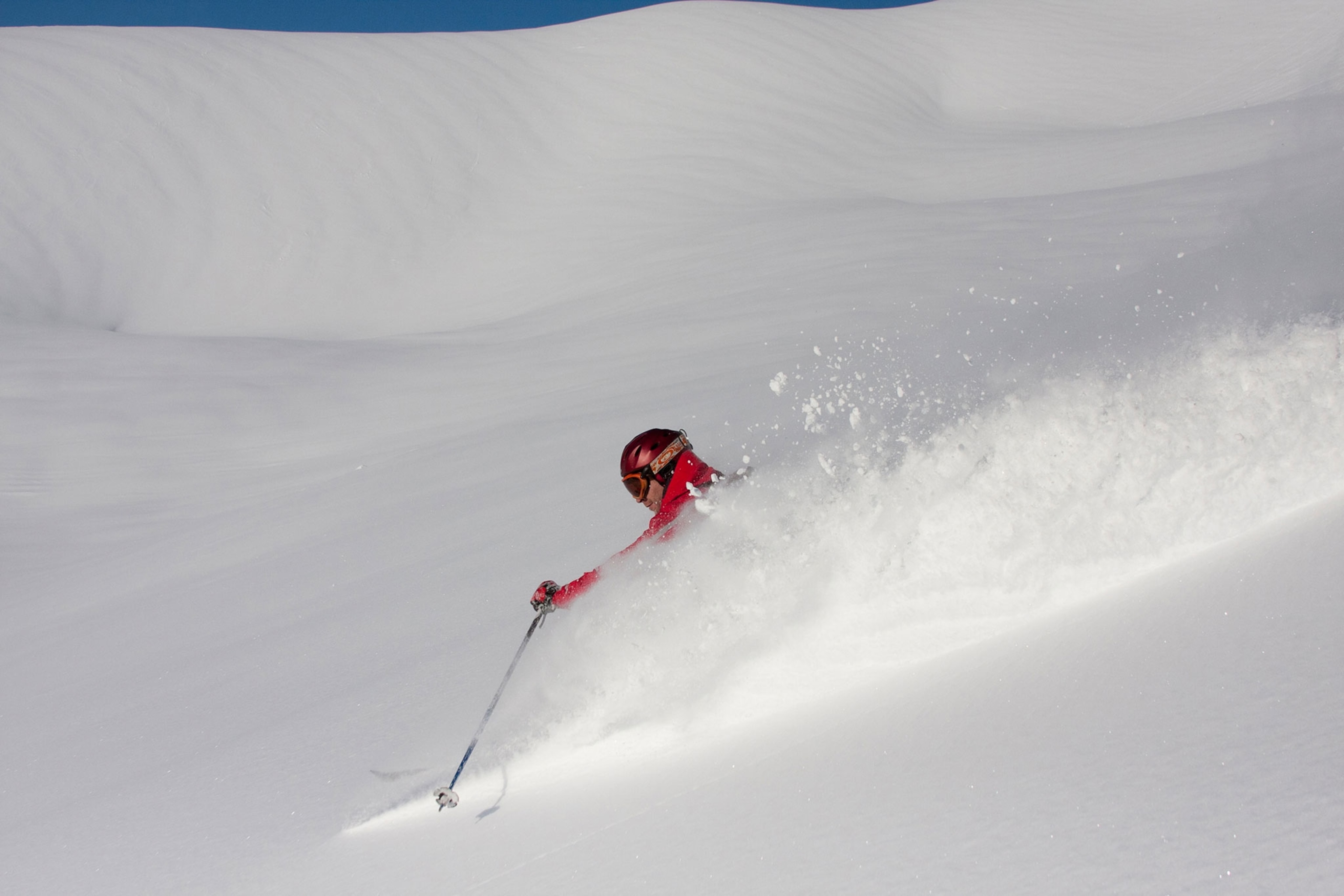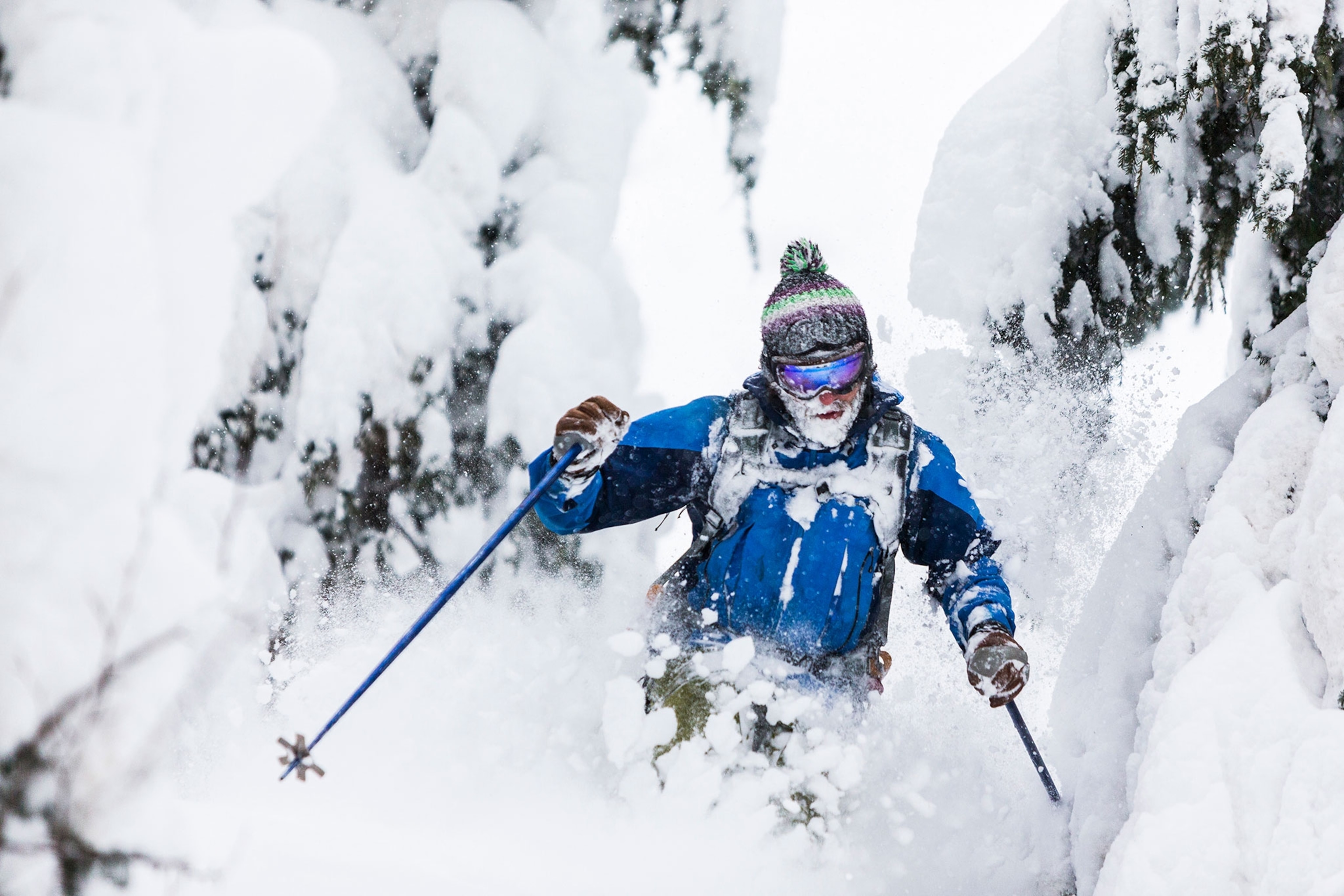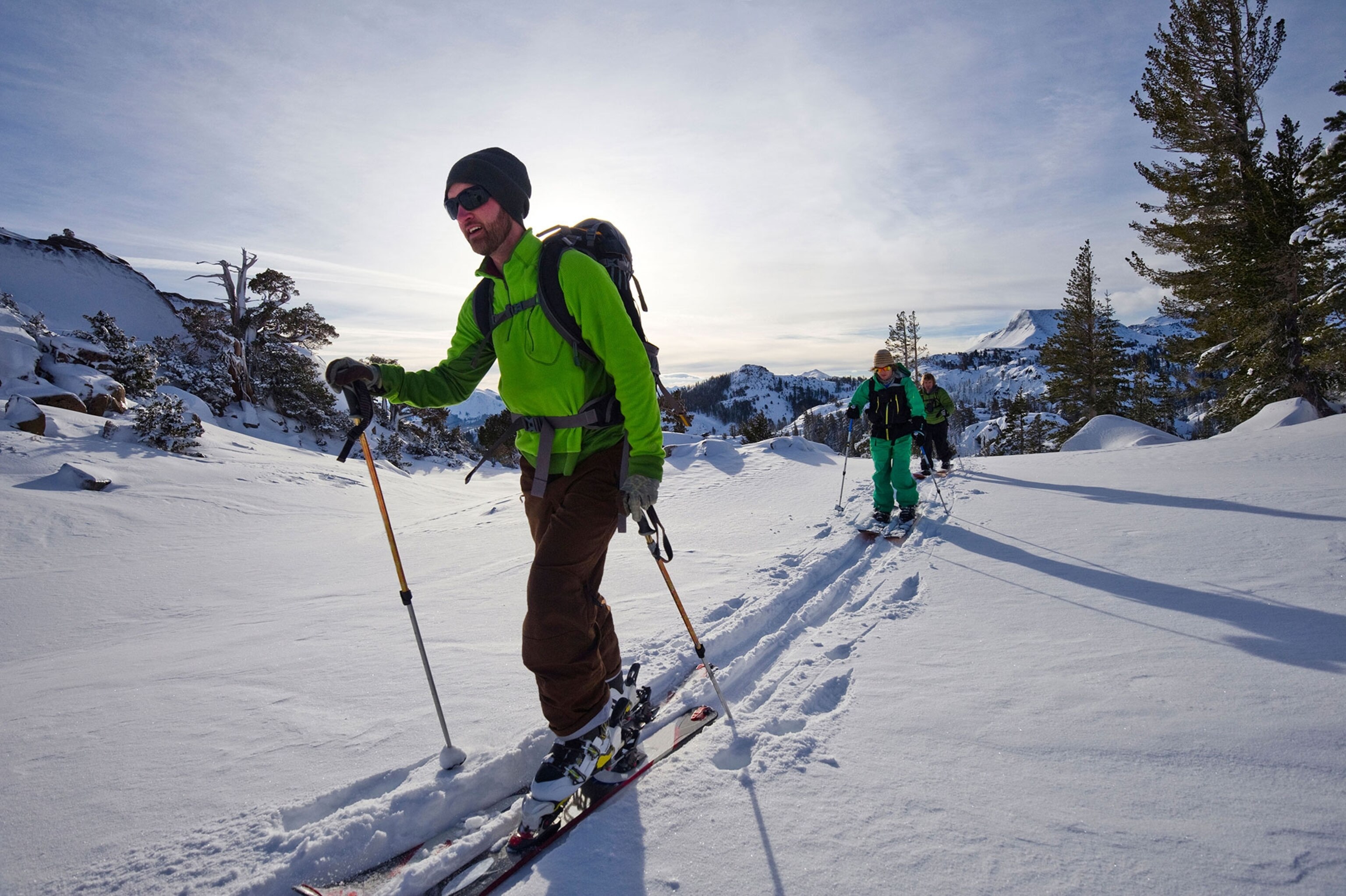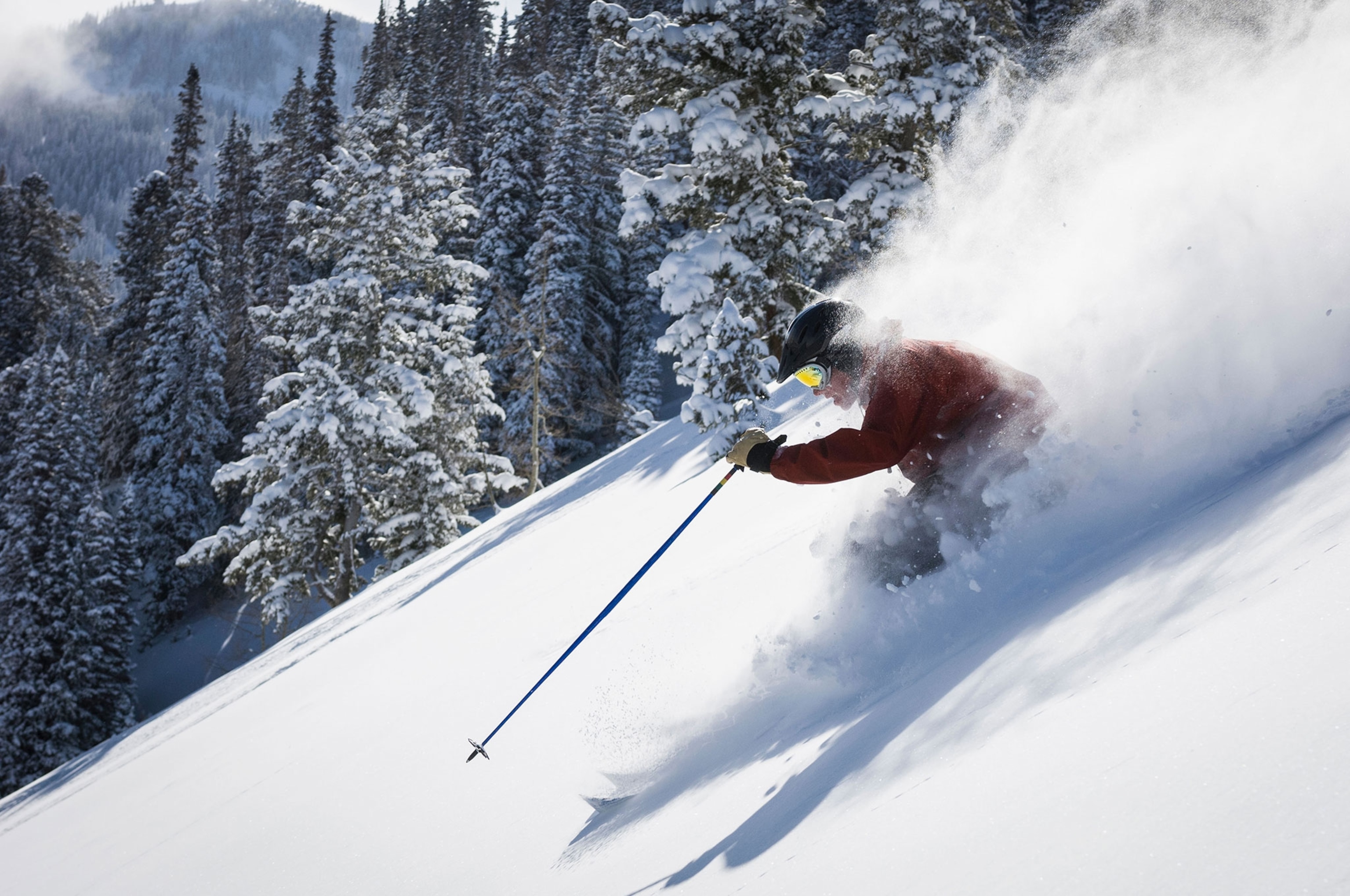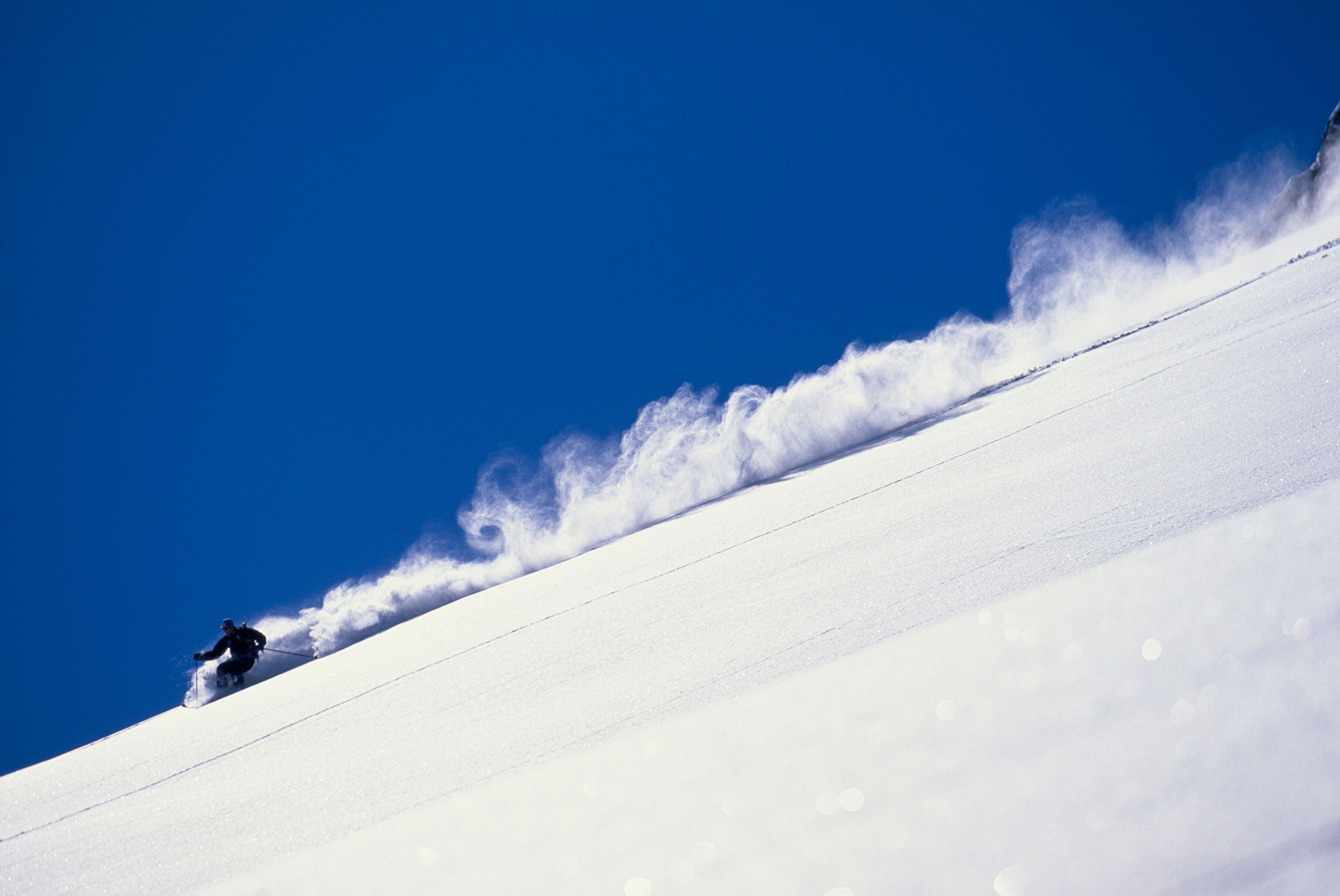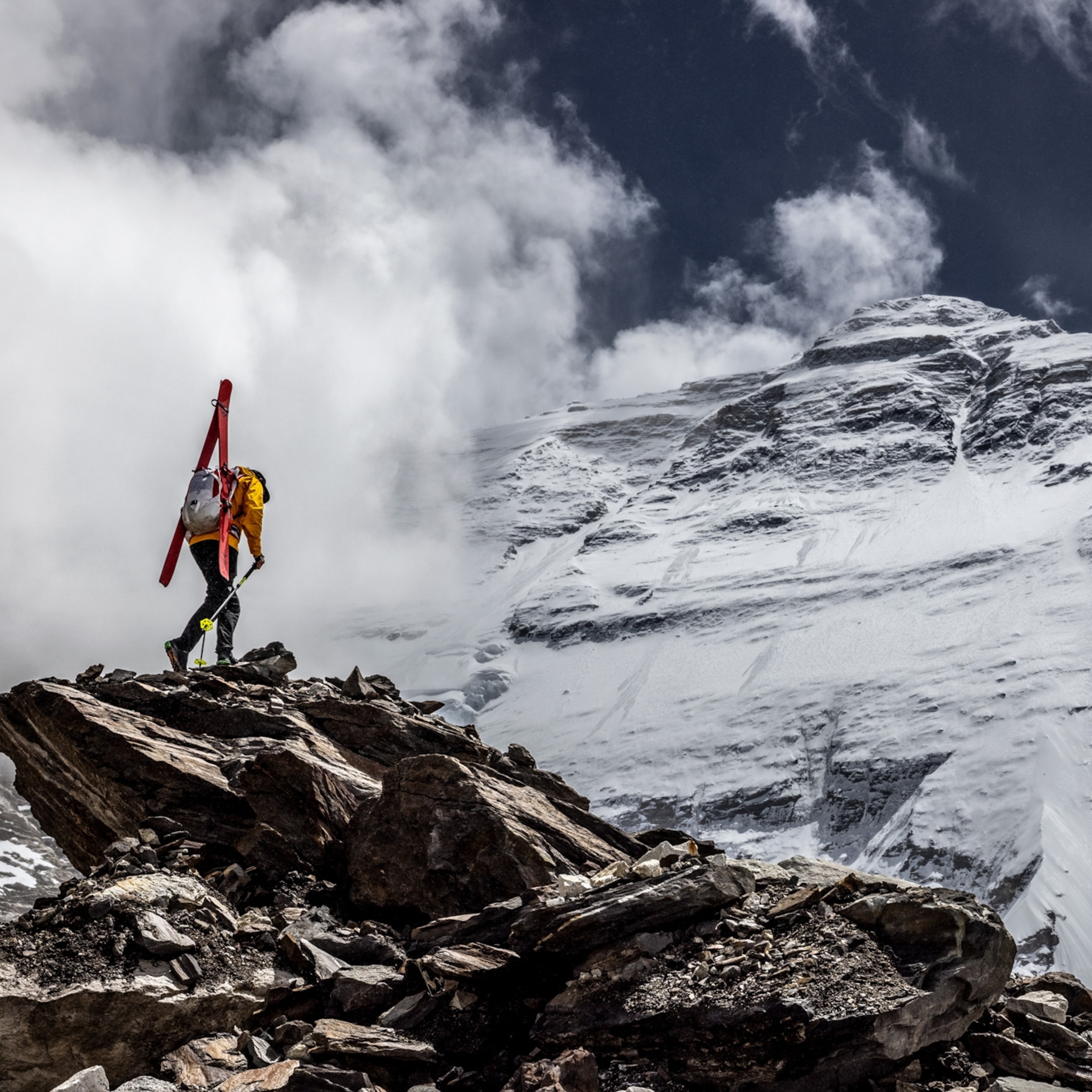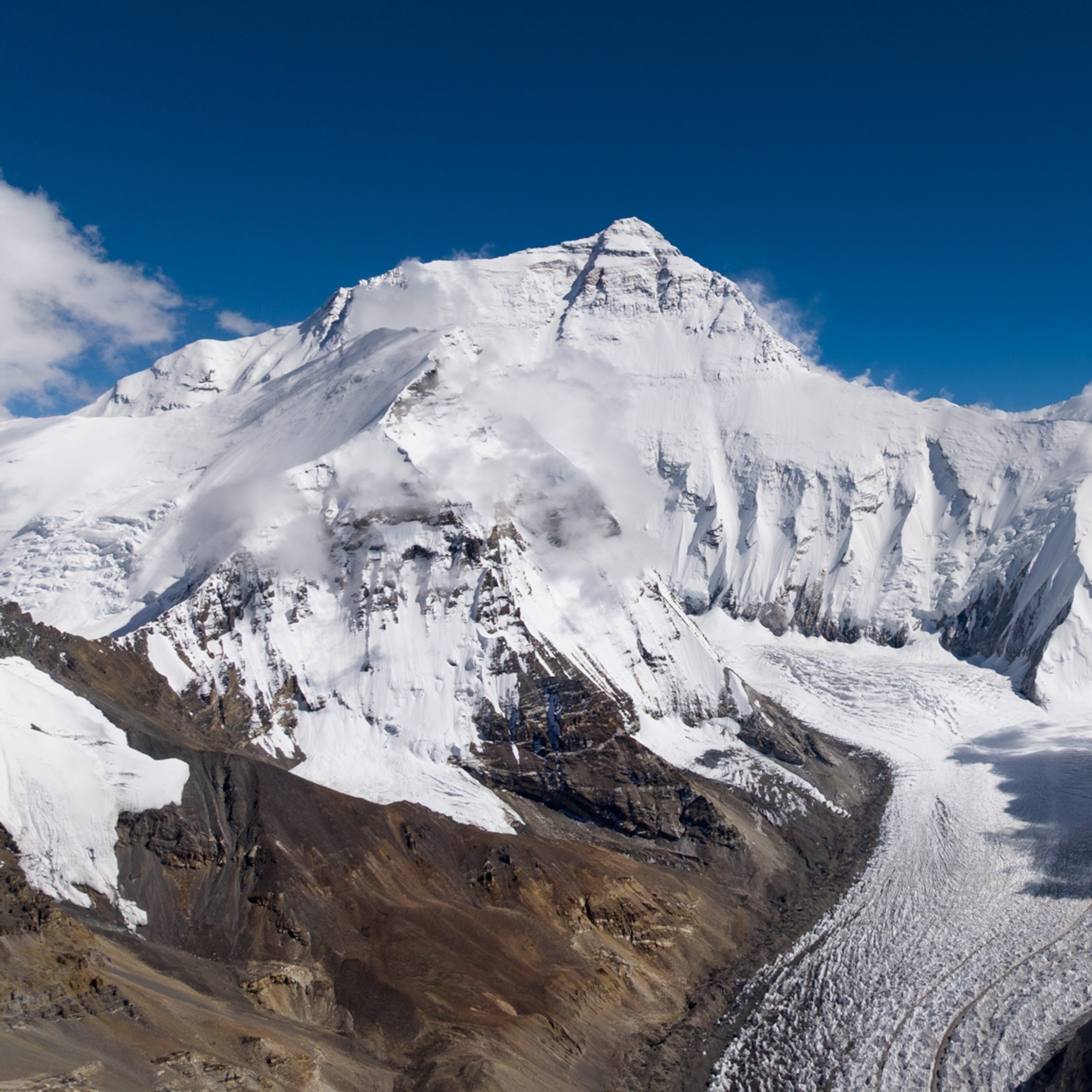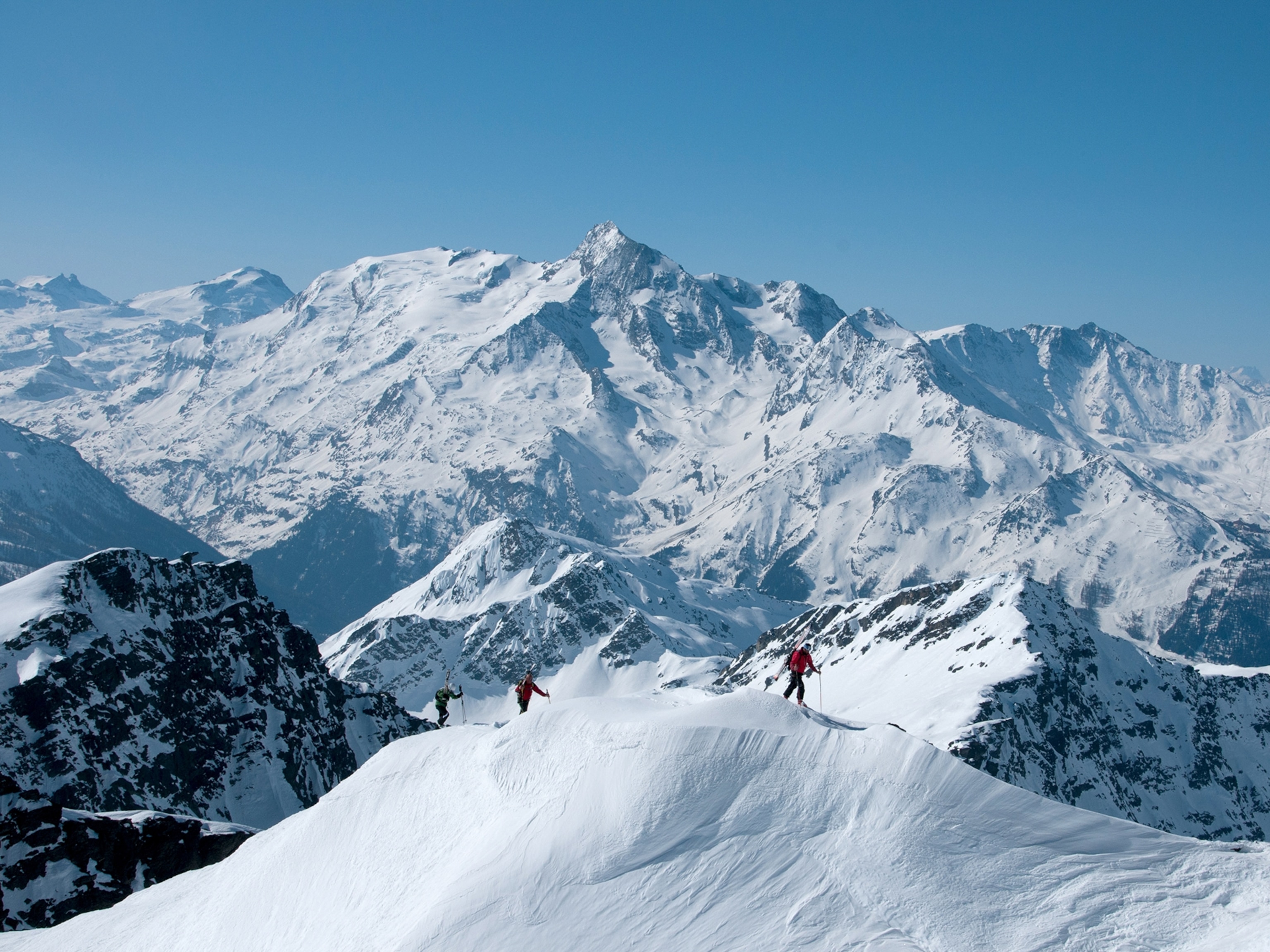10 Ski Resorts with the Deepest Snow in America
These ski-and-snowboard meccas lure adventurers seeing ultra-deep powder and runs off the beaten track.
January 2017 was a month to remember for skiers and snowboarders. Thanks to effects from La Nina and other factors, ski resorts around the West have been breaking records all season.
The snow got so deep—up to 12 feet in one week—in parts of the Sierra that Tahoe launched its #Januburied Instagram movement. Nine feet of snow in three days closed California's Kirkwood Mountain Resort. Squaw Valley Ski Resort broke a 45-year record for monthly snow totals with 212 inches in January and a ski patrol fatality. Nearby, Mount Rose Ski Tahoe passed the 300-inch mark for snowfall. Mammoth Mountain picked up a record-setting 164 inches of snow. On January 9, Crested Butte Mountain Resort in Colorado closed early after accumulating a foot of snow before noon. On January 10, multiple avalanches closed 1-70, Colorado’s main freeway through the mountains. More than 200 inches of snow fell on Jackson Hole Mountain Resort in Wyoming. The best news from a meteorological standpoint? All of California north of Interstate 80 is now free of drought.
The northern Cascades of Oregon and Washington have also racked up huge amounts of snow, much of it colder and lighter than Pacific Northwest skiers are used to. La Nina tends to push the jet stream on a northerly track through the U.S., which is why the Pacific Northwest usually benefits from the phenomenon.
The best part of planning trips to any of these deep resorts is their dependable average annual snowfall. Your chances of scoring a powder day at one of these resorts is all but guaranteed.
Alyeska Resort, Alaska
Average annual snowfall: 669 inches (55 feet, nine inches)
Alaska’s largest resort averages more than 600 inches—more snow than most resorts in North America could amass on a record year. Last winter, Alyeska accumulated 824 inches of snow on its 1,400 acres of terrain that drop 2,350 vertical feet. This far north, trees don’t grow above 1,800 feet, creating an Alps-like experience on the upper mountain. Only a 40-minute drive separates Alyeska and its town of Girdwood from Anchorage, but crowds are non-existent mid-week, when lift tickets cost $60.
On a powder day, you’ll want to take Alyeska’s 60-person tram (maybe you’ll score a view of the Turnagain Arm of the Gulf of Alaska) and drop into South Face for some deep turns to get the heart pumping. “From here, head out the Rag Doll Gate on the North Face and hit the Knuckles, a long, steep spine with playful features,” says Alyeska ambassador and Alaska Department of Transportation project manager Jason Scheban. “If there happens to be a line-up for the tram, take Chair 4 to Chair 6.” Scheben usually laps Knuckles while the fresh snow lasts, working his way right after each run. Next up, it’s High Traverse or the powder-filled trees and meadows of Max’s. But, says Scheben, the aforementioned strategies should be tossed out the tram window if Christmas, New Year’s Chutes, or the Headwall opens. “Watch for these rope drops,” he says. “Getting firsts in these zones is dreamy.” Others have compared it to heli-skiing, which these mountains—the Chugach—are famous for.
Spring makes up for Alaska’s short winter days. In March, you can ski the resort until 7 p.m. At the base, Hotel Alyeska—affectionately known as Castle Greyskull for its utilitarian architecture—offers lodging within walking distance of the lifts, as well as restaurants, a spa, a concert venue, and a Chugach Powder Guides helipad out back in case the sound of the chopper is just too enticing.
Mt. Baker Ski Area, Washington
Average annual snowfall: 682 inches (56 feet, 10 inches)
During a strong La Nina episode in 1998-99, Washington’s Mt. Baker Ski Area broke the world record for snowfall in a single season: 1,140 inches, or 95 feet! The ski area’s annual snowfall average tops 680 inches. For real. In a snow globe between Mount Baker and Mount Shuksan, Mt. Baker Ski Area averages 30 to 50 percent more snow than neighboring ski areas at similar elevations. This season has already brought 327 inches.
You’ll notice the word “resort” missing from its title—this ski area offers few frills. Lift tickets cost $60 and the chairlifts are slow. Mt. Baker Ski Area offers no coffee shops, no slopeside lodging, and no cell phone service. You’ll have to drive 30 minutes down the road to Glacier for that.
On a powder day, Barrett Christy, a former Olympic snowboarder and a director at Mervin Manufacturing, recommends Chair 7 from the White Salmon Lodge and a short, steep shot known as Chair 7 Extremes right under the chair. Next head to Chair 5, where you’ll find steeps, gullies, and fun features worth several laps on a deep day. Heed the rope lines and signage—many steep pitches and gullies end in a cliff. Beyond the boundary, backcountry skiers and snowboarders with the proper knowledge and equipment ski the uncontrolled terrain on Shuksan Arm and Table Mountain, like Heli Line, a 40-degree chute accessed from a 45-minute hike from Chair 8. The terrain takes no prisoners—since Baker’s record-breaking snow year, the surrounding backcountry has claimed the lives of at least a dozen people.
The ski area is known as much for its terrain as its snowfall. “Baker offers so much in a relatively concentrated area, compared to big resorts,” says Christy. “I love how Baker has steep pitches, chutes, and trees that can make every run exciting without having to traverse back and forth across the mountain.”
Sugar Bowl, California
Average annual snowfall: 500 inches (41 feet, 10 inches)
The least flashy of the Tahoe ski areas, Sugar Bowl has been family-owned since its inception in 1939. Its location atop Donner Summit, where storms collide with the Sierra Nevada, often receives the highest snow totals in the region. This year, it has accumulated 388 inches of snow. Two peaks shield its above-treeline terrain, which often remains open during windy storm days.
Sugar Bowl retains much of its local charm. Neighboring homeowners have the final say on resort decisions. The highway traffic from the Bay Area that once funneled through Highway 40 and Donner Pass now routes north to I-80, leaving Sugar Bowl one of the least-crowded Tahoe resorts.
Daron Rahlves, the most decorated American downhiller, refers to Sugar Bowl as his own private resort. “The terrain, snow, and quiet feel make it unique,” says Rahlves. “I take nonstops through Silver Belt Gully into Steilhang or veer off the gully to 58 and exit Rock Garden to ski myself into shape.” His go-to on a powder day? Disney Nose or East Face. Pay attention to the rope line dropping for Nancy's and Sugar Bowl for your second run. He also recommends the top gate off 8,383-foot Mount Lincoln into Silver Belt Gully or Fullers to Sisters, which opens later on a powder day. The lift line of Crows Nest chair (new in 2013) offers 800 vertical feet of consistent, steep skiing that Rhalves says fills in beautifully after a storm. Rhalves suggests monitoring Sugar Bowl’s social network channels and ski patrol. “They are good with letting you know what's good and when a closed off area will open after they do their Avy control,” he says.
Sugar Bowl, in conjunction with the U.S. Forestry Service, maintains an open boundary policy, meaning you can take lifts to access backcountry terrain and ski back to the resort. Sugar Bowl’s Backcountry Adventure Center offers rentals, educational courses, and backcountry tours.
Brighton Ski Resort, Utah
Average annual snowfall: 500 inches (41 feet, 10 inches)
Known for its laidback, unpretentious, and friendly atmosphere, Brighton attracts some of the world’s best snowboarders, like J.P. Walker and Chris Grenier, and draws a young crowd. In fact, kids 10 and under ski free, and last season, the resort started offering its “ski in three or it's free” ski school program which guarantees beginners will learn to ski in three sessions or the classes are free at this supersnowy resort.
Steep canyons bisect the Wasatch mountains to the west of Salt Lake City and the massive Great Salt Lake. Winter storms extract salty moisture from the lake and dump an average of 500 inches of light snow—often called the “greatest snow on earth”—on the four ski resorts in Big and Little Cottonwood Canyons. Big Cottonwood Canyon narrows into a dramatic 15-mile scenic byway that ends at Brighton Resort.
The only resort in Utah with strictly high-speed quads, Brighton efficiently spreads out visitors on its 1,050 acres and 1,875 vertical feet of terrain. “It has constantly good snow all year and amazing natural terrain,” says Walker, the legendary professional snowboarder. “The way the resort is laid out and the surrounding backcountry bowls can provide untracked powder runs long after a storm.”
On a powder day, follow Walker’s lead and head to Milly Express. “If the bowl is open, I would drop almost straight under the lift and hit some of the natural wind lips and cliffs,” says Walker. “From there, I would just keep working the bowl farther along the traverse to find fresh snow.” When that’s tracked, Walker suggests the 10-minute hike up Pioneer Peak from Crest Express for quick tree shots where fresh turns are usually hiding.
Brighton’s four terrain parks and 15-foot-deep, 350-foot-long superpipe cater to a variety of ability levels. It’s also home to the only night skiing in Salt Lake City. At the end of the day, grab a seat and some nachos at Molly Green’s Tavern inside the A-Frame at the base, one of Salt Lake City’s favorite après spots.
Sierra-at-Tahoe, California
Average annual snowfall: 480 inches (40 feet)
When a Sierra storm comes blowing and the chairlifts at other Lake Tahoe resorts are on wind hold, they are most likely spinning at Sierra-at-Tahoe, 12 miles south of South Shore Lake Tahoe. “We get tons of snow and the resort is really sheltered from the wind,” says world champion halfpipe skier Kyle Smaine. By the third week of January this year, the resort had received 24 feet of snow and racked up 30” in one 24-hour period. The combination of 480 inches of snow on average each season, huge stands of old-growth Red Fir trees, and aesthetic granite boulders creates Tahoe’s tree skiing capital.
Once you have an idea of Sierra’s three main areas—Upper Mountain, Backside, and West Bowl—the resort is fairly easy to navigate. All of the zones can be accessed by Grandview, the main high-speed quad from the base lodge. On a powder day, Smaine first heads to the trees off Castle Run: “It’s superfun, playful terrain with perfectly spaced out old-growth trees that protect the snow and still allow you to ski fast without getting into too much trouble.”
Four-time X Games champion and Olympic gold medalist Maddie Bowman opts for Daylight Chute to the trees off Dynamite, followed by the trees in Preacher’s Passion. Smaine suggests letting someone set the traverse into Huckleberry Canyon, then dropping into Gate 2. “It accesses such a variety of terrain from steeps with cliffs and chutes, to mellow and fun tree skiing,” he says.
Sierra-at-Tahoe’s base area is refreshingly devoid of condos, high-end retail, and Starbucks. Parking is free, and the mountain’s general manager spends a lot of his time on the slopes, taking interest in visitors and employees. The resort’s Project: Green Sierra encompasses mountain-wide efforts on behalf on the environment such as using B5 biodiesel fuel, offering transportation services and incentives for hybrid vehicles, and implementing efficient lighting throughout the resort.
Mt. Bachelor, Oregon
Average annual snowfall: 462 inches (38 feet, six inches)
By late January, more than 325 inches of snow had fallen on Mt. Bachelor, the 9,065-foot stratovolcano on the eastern flanks of the Cascades. Thirty minutes to the east, juniper and sagebrush mark Oregon’s high desert where Bend (population 90,000) enjoys 300 days a year of sun and less than a foot of rain annually. Isolated Mt. Bachelor attracts regular storms that haven’t lost much steam from the Pacific, less than four hours away. But the resort offers the highest elevation skiing in Oregon or Washington, meaning the snow is lighter than areas like Mt. Hood or Mt. Baker.
Wind is to Mt. Bachelor as breweries are to Bend—overkill, but character-defining. When winds are calm and Summit Express is running, Mt. Bachelor offers 360-degree skiing from its summit all the way to the cat road that encircles the mountain’s entire base. When the wind creates white-out conditions, the area’s old growth tree runs shine. The wind also refills tracks and shapes the wind lips the area is known for. The skiers and snowboarders who know how to surf Bachelor’s unique terrain, which includes natural halfpipes from ancient lava flows, have the most fun. “Bachelor is a giant cone; Change your angle a little and you can find fresh snow just outside the main veins,” says professional skier Sage Cattabriga-Alosa, who recently settled in Bend. Cattabriga-Alosa’s advice on a powder day? Fall line under Outback Express, then head west, one chair over, to Northwest Express. Head looker’s right and traverse west, dropping into the first fresh alpine bowl, which will funnel into perfectly spaced Douglas firs before emptying onto the cat track.
Surrounded by national forest, Mt. Bachelor’s only lodging are the RVs parked in the lot, like professional snowboarder Austin Smith’s 1953 GMC fire truck turned tiny home. Head to Bend for all the craft brew, direct-trade coffee, and food truck provisions you desire.
Grand Targhee, Wyoming
Average annual snowfall: 500 inches (41 feet, 10 inches)
Almost 300 inches of snow had gathered at Grand Targhee by mid-January this year, well on the way to Targhee’s average of 500 inches a season. On the western (meaning snowier) slope of the Tetons, on the other side of Teton Pass from Jackson, Targhee grabs the storm cycle first. While Targhee is notorious for fog, it’s also known for underreporting snowfall amounts, cheaper lift tickets, and crowd-free skiing.
Grand Targhee Ski & Snowboard School Director Mark Hanson, a 26-year veteran at the resort, sums up the area best: “True wall-to-wall skiing with measly crowds and plentiful snow. In fact, we tend to get our snow in smaller increments, giving us more powder days per season than almost anywhere. Plus, Targhee has more elbow room than a warehouse.”
Two high-speed quads access most of Targhee’s 2,602 acres of trees skiing, open bowls, and chutes. Take Dreamcatcher to the summit of Fred’s Mountain for quick laps and ideally spaced tree runs that harbor powder pockets, like Crazy Horse Woods, which Hanson skis first on a powder day. Then, it’s the Headwall traverse. “Often, you’ll find the deepest, north-facing snow on the mountain,” says Hanson. Sacajawea chair only goes part way up neighboring Peaked Mountain, but often sits below the fog layer and services some of the steepest terrain. The newly replaced Blackfoot chair accesses some secret stashes lower down.
You’ll want to hike to the summit of Mary’s Nipple for 1,000-foot shots down the open bowl, in the trees, and the best views of Grand Teton, Mt. Owen, and Middle Teton. Scott’s Gate, at the bottom of the Mary’s Nipple bootpack, allows backcountry skiers to access the Jedediah Smith Wilderness.
Grand Targhee’s snowcat skiing offers 600 acres of fun, lower-angle tree skiing and up to 18,000 feet of vertical for $400. The area’s Trap Bar routinely makes “best après” lists thanks to its authentic character and its WyDaho nachos that use waffle-cut fries instead of tortilla chips.
Solitude, Utah
Average annual snowfall: 500 inches (41 feet, 10 inches)
- National Geographic Expeditions
It’s all in the name. While the powder frenzy up nearby Little Cottonwood Canyon often makes powder days feel as stressful as work days, Solitude in Big Cottonwood Canyon offers an alternative experience. “It's a lot quieter than all the other big Utah resorts,” says professional skier and Big Cottonwood Canyon resident Grete Eliassen. “You can still take a run here and not see anyone.” It’s hard to believe that Solitude is a mere 30 minutes from Salt Lake City. What the area lacks in acreage (1,100), it makes up for in terrain (2,030 vertical feet), snowfall, and, well, solitude.
As for snow, the canyons to the west of Solitude block prevailing winds, creating the Utah powder of legend. On a powder day, ski patrol opens the front of the mountain first, then sometime between mid-morning and noon, they usually open Summit Lift to access the rest of the mountain. If you score one of the first few chairlifts on Eagle Express, ski to Challenger for a top-to-bottom powder run. For a second run, Eliassen suggests taking a left off Eagle Express to Gary's Glade. Ski to Powderhorn lift, then head for the old growth Limber pine trees down Paradise.
Once the upper mountain opens, big mountain skier Harrison Holley heads to Summit Express to access Headwall Forest, where you’ll find tight chutes and open tree skiing. Honeycomb Canyon off the backside of the resort offers all the excitement the world’s best skiers could want, plus an intermediate run through the middle. You can expect open bowls and a series of skiable chutes on the far side of the canyon, while the closer side of the canyon accessed via Eagle Ridge trail offers steeper terrain more protected from the sun. If you have a nose for fresh pockets, you might find untracked shots days after a storm.
As Eliassen points out, Solitude’s central location in the Wasatch makes it a great base for backcountry skiing. Traverses from the top of the Summit lift lead to famous backcountry zones like Grizzly Gulch, Patsy Marley, and Wolverine Cirque, and even 2,500-vertical-feet runs down to the highway.
Alta Ski Area, Utah
Average annual snowfall: 551 (45 feet, 11 inches)
Alta needs little introduction as a powder resort. In 1982-1983, almost 850 inches (71 feet) fell on the famed ski area at the top of Little Cottonwood Canyon. Alta rests its laurels on its average annual snowfall, which hovers around 550 inches. But it also ties its identity to a rich ski history and preservation over development. The area still bans snowboarding, and one if its best-loved chairlifts is 34-year-old double chair. A former silver mining town, Alta became Utah’s first ski resort in 1938 and has remained independent and family-owned. “It’s a mellower tempo than next door,” says Alta ski patroller Jesse Weeks of neighboring Snowbird.
Weeks has a go-to run on a powder day: High Rustler to Rus Pine Chute (a 10-foot-wide, 500-foot-long chute between High Rustler and Lone Pine) through the aspen grove on Windy Point. This season, says Weeks, with the cat roads across High Rustler M.I.A., the run is top-to-bottom perfection. But he warns of the navigational challenges. “Sometimes I’ll end up atop a 30- to 40-foot cliff.” Next up, it’s Tilted World to Hidden Meadow, between Eagle’s Nest and Regal Chute, to the right side of High Rustler. “If you ski 100 feet down and go straight, you’ll go off a cliff, but if you take a hard right into Eagle’s and then a hard left, you’ll find an untracked steep run you can milk all the way to the rope tow.” If Weeks’ suggestions include too many cliff warnings, head to Baldy Shoulder, a short hike from Wildcat lift, the trees of Westward Ho, or, if you’re lucky, Main Chute on Mount Baldy.
Alta enjoys a thriving après scene. The Sitzmark Bar—or “The Sitz”—offers a cozy fireplace room atop the Alta Lodge, where the scent of mulled apple cider wafts through the original walls and a drink called a Party Marg awaits. At the Peruvian, you’ll find free apps (the stuff ski bum dreams are made of) and, often, live music. Alta’s lodges, like the Peruvian and Alta Lodge, enjoy some of the best return rates in the industry and include family-style dinner and breakfasts that conjure the golden age of skiing.
Snowbird, Utah
Average annual snowfall: 500 (41 feet, 10 inches)
With 500 inches of snow falling on average each season, Snowbird Ski and Summer Resort offers the kind of life-changing powder days that persuade people to stay in Salt Lake City forever. The resort accumulated more than eight feet of snow in January this year. One storm in late January dumped 48 inches mid-mountain. In 2011, Snowbird passed a 40-year record for single season snowfall when it hit snowed 690 inches—that’s more than 57 feet.
Snowbird’s real moneymaker is its tram. In 10 minutes, 125 skiers are whisked up 2,900 vertical feet to 11,000-foot Hidden Peak (and the new Summit Lodge), and a world of hanging bowls, cliffs, steep chutes, and, of course, some terrain for mortals, too. Whereas neighboring Alta requires traverses and side-step hikes to hit multiple terrain zones, Snowbird’s tram creates more fall-line terrain and fast laps.
“What makes Snowbird special for me is just how complex the terrain can be,” says Snowbird lifer and Warren Miller skier Marcus Caston. “Sure, there are great runs for every level skier to have a good time, but the technical terrain that scares the pants off you is the stuff I love.”
Caston says your first run on a powder day should be in the Cirque. “Classic runs like Great Scott in perfect powder are rare these days, but when you get it good, you may decide to never leave, and you wouldn't be the first,” he says. For your second lap, Caston recommends checking the opening status on Baldy: If it’s green, go for it. If not, head back to the Cirque and traverse farther to a run like Tower 3. “Snowbird is about adventure,” says Caston. “I have found some of my favorite secret stashes while out getting lost in the woods.”
Snowbird’s concrete, avalanche-proof buildings house everything you need before, after, and during skiing—helpful when the Utah Department of Transportation closes the canyon road and sometimes forbids people from leaving their buildings until avalanche conditions are deemed safe. Stop by the Tram Club for après, then it’s a short lift ride or walk up to the newly remodeled guest rooms in the Cliff Lodge and sushi at the Aerie Lounge.
